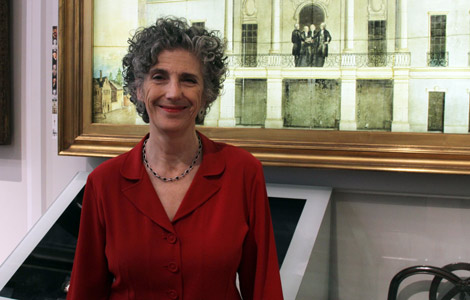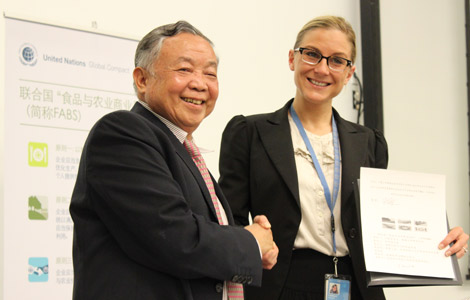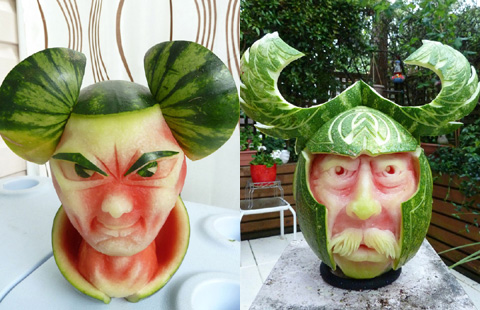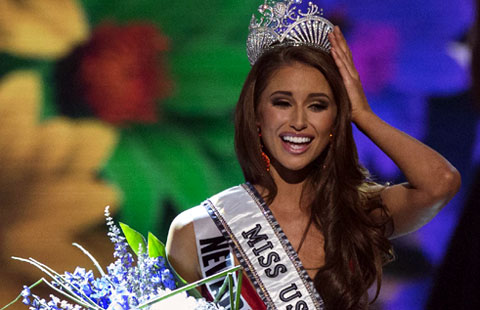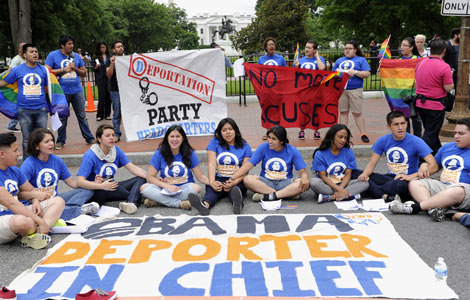Museum focuses on immigrants
Updated: 2014-06-13 11:22
By Amy He in New York (China Daily USA)
|
||||||||
A "coaching book" is used by many Chinese immigrants who came to the United States during the 20th century, filled with potential questions that American interviewers might ask them about their hometowns and ancestors when they first arrived on US shores.
The questions were often exceedingly detailed, and Chinese immigrants would study the answers when they arrived and even after the interrogation, they would often be held at immigration stations for months before they were accepted or rejected by US officials.
One of those coaching books from Amy Chin's family will be featured in an upcoming exhibition on Chinese-American immigration at the New York-Historical Society, called Chinese American: Exclusion/Inclusion.
The exhibition, set to open at the end of September, will feature more than 200 pieces of artwork, photographs, and other historical documents that trace the long history of Chinese integration into American society. It chronicles their immigration, the lives they made in the US and the families and communities they eventually built.
Chinese American focuses on exclusion, referring to the Chinese Exclusion Act of 1882, when former president Chester Arthur signed a law that banned all immigration of Chinese laborers, the only US law ever to prevent immigration and naturalization on the basis of race.
Those who were already in the country prior to the law's passing were denied citizenship; those who left had to obtain certification for re-entry.
Marci Reaven, vice-president for historical exhibitions at the society, said that it wanted to spotlight how Chinese immigrants' exclusion relates to the development of US society, especially as it pertains to immigration and citizenship - and how it adds color to the concept of what it means to be an American.
"That's one of the key questions that get asked: in what way does the story help us know what has made an American and what makes an American?" she told China Daily.
But because this difficult period in Chinese-American history had lasting impact on family creation and the integration of Chinese into mainstream American society, it made gathering artifacts difficult at times, she said.
"One of the effects of the anti-Chinese movement that grew up so early in our country's history is that the objects and images are in short supply. It's not a well-documented history," Reaven said.
There were many white American-produced items that depicted anti-Chinese sentiment, including a snuff box from the late 1800s that shows violence against a Chinese laborer, and a number of cartoons published in US newspapers that portray stereotypes of Chinese laborers, all of which will be on display at the exhibit.
But items from Chinese families were often hard to find, Reaven said.
"Newspapers were certainly writing about [the Chinese], but there are fewer collections of Chinese-American ephemera that went down through families, probably because families weren't being set up as much as other cultures. At first, it was because of the cultural preferences about women not traveling, but then secondly because they were prevented to do so by law," she said.
"I think it could often be women who could be holders of family lore and things like that, so if families aren't being set up, you're probably not going to have the same kinds of collecting going on if people are not able to set up more stable households. There's maybe not an attic where this material is collected."
As part of a marginalized class, Chinese laborers had less stable lives, less time for recreational activities like letter writing, and those who did were less likely to have their works compiled by publishing houses, Reaven said.

So putting together the exhibit, which took about two years, required working extensively with different historical society organizations like the Chinese Historical Society of America in San Francisco, as well as museums that had pre-existing artworks from the time, like the Metropolitan Museum of Art.
But Reaven said that an exhibit featuring Chinese-American history is important because that part of American history often gets overlooked.
"In the textbooks, you learn maybe about Chinese people working on the railroads, the Gold Rush; you get a couple of lines about Chinese exclusion... But there's really very little else that's covered as part of American history, so this puts the Chinese-American story in the center of American history. I think that's why institution wanted to do it," she said.
The exhibit will run until May 2015 before moving to other cities, including Portland, Oregon and San Francisco.
amyhe@chinadailyusa.com
|
Marci Reaven, vice president for history exhibitions at the New-York Historical Society, is a curator for the upcoming "Chinese America: Exclusion/Inclusion" exhibit that will feature over 200 pieces of artwork, photographs, and historical documents on Chinese immigrants in the US. Amy He / China Daily |
(China Daily USA 06/13/2014 page2)

 World Cup fever grips Chinese soccer fans
World Cup fever grips Chinese soccer fans
 Former Alibaba VP wants his documentary on US TV
Former Alibaba VP wants his documentary on US TV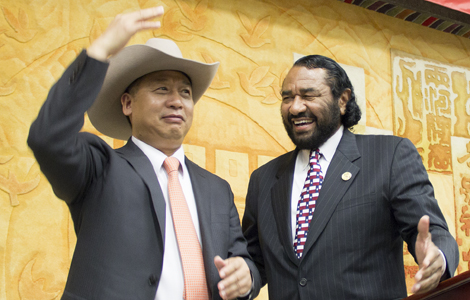
 Consul general welcomed
Consul general welcomed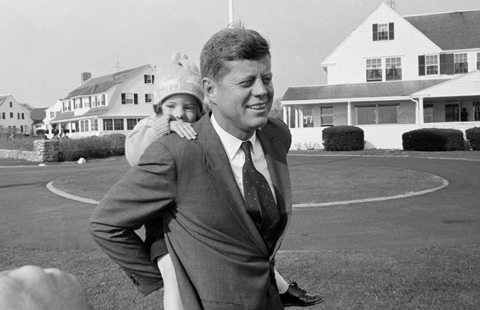
 Tender moments of world leaders with their children
Tender moments of world leaders with their children
 Chinese fleet joins others for RIMPAC exercise
Chinese fleet joins others for RIMPAC exercise
 Obama visits native American reservation
Obama visits native American reservation
 Clinton has reasons to run at her ready
Clinton has reasons to run at her ready
 Angelina Jolie shines at summit against sexual violence
Angelina Jolie shines at summit against sexual violence
Most Viewed
Editor's Picks

|

|

|

|
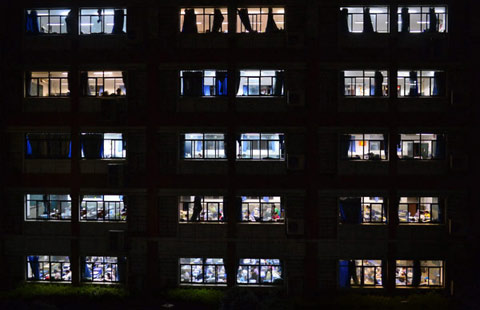
|
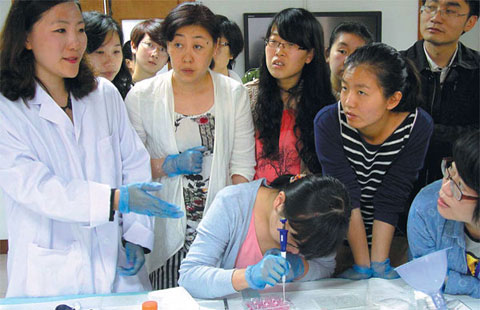
|
Today's Top News
US should 'attune itself to China's rise'
US hay helping China's dairy needs
Chinese TV show expands to US
Former US congressman: Diaoyu belongs to China
US options could help combat advances by Iraqi militants
US applauds voting in Afghan presidential polls
Oregon high school shooter's parents offer apology
Army: Bergdahl 'looked good' after returning to US
US Weekly

|

|

